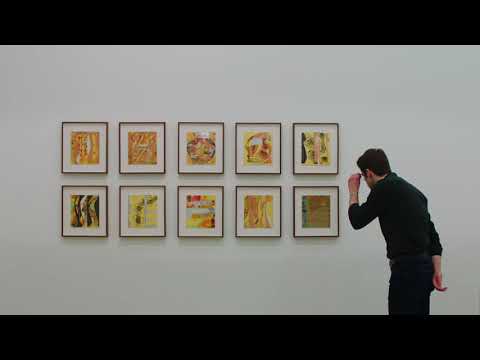(Reuters) – There was no formal opening or personal interaction with fans. Instead, Gabriel Orozco, the Mexican artist with a continents-spanning perspective, promoted his new collage watercolors with a dramatic, screen-friendly teaser.
Orozco created the several dozen works while in quarantine in Japan earlier this year, but he oversaw their installation at a top-tier Manhattan gallery the way millions now work: virtually.
In a first for Orozco, the collection – containing the watercolors, as well as larger abstract paintings created mostly in Mexico – debuted last month without a glitzy public opening.
There was no chance for admirers or critics alike to interact with the artist, renowned for transforming ordinary items into poetic flourishes since the early 1990s. So, his new paintings were publicized with a slick, video teaser set to dramatic music. youtu.be/PyD1-WWyJ6A
Forced to rely more than ever on tools like Zoom and Skype across a range of current projects, the son of a leftist Mexican muralist says he sees an evolving transformation of creativity born from the upheaval of global pandemic.
“There is the opportunity, probably, of a new generation to emerge, a new way of working to emerge, an alternative way of living for everybody to be reconsidered,” he said, sitting just off the lush courtyard of his Mexico City home.
An hour earlier, squatting down with pencil in hand, he discussed finishing touches to block sculptures he calls dice with his collaborator, Mexican stonemason Juan Fraga, who he had met face-to-face for the first time in months.
Before the pandemic, the two would meet every couple of weeks to refine the layers of whimsical geometric designs carved into the blocks. Orozco said his art, spread generously over sculpture, canvases, human and animal bones, minimalist installations, and more, took a mild hit from restrictions on travel and personal contact. “Like many people, I start to suffer this kind of psychological effect of being in the screen all the time,” he said, calling it “very distracting.”
More generally, Orozco expects more changes emerging from the pandemic’s disruptions, even if its ultimate impact on creativity and inspiration is not yet clear.
Orozco, 58, sees the same changes that are upending how people work – less face-to-face contact and more screen time – also making their mark on the museums and commercial art galleries he knows well.
“In this new art world, there’s going to be more and more of a dependence on the distribution of works with digital media, and so the gallery, all the galleries, are making much more of an effort,” he said.
At the same time, his latest work appears to have taken on a more introspective turn. He noted that for his new watercolors he allowed himself an indulgence he does not usually seek.
“Psychologically (the paintings) were interesting because they became a very, I call them a little neurotic, passionate, almost therapeutic, which is something I don’t like to do in art,” he said.
Orozco argues that the social isolation and anxiety felt by many over the past few months is already changing how we create and communicate.
“The pandemic is a moment of a crash of activity that accelerates the crisis that was coming from before,” he said, a few hours before he was set to fly back to Japan.
The artist, who has also spent extended stints in London, Paris, and Bali, said less travel had been something of a relief.
“That was okay in a way because it was not so bad to slow down,” said Orozco, who studied art in Mexico in the 1980s before leaving for Spain, Brazil and the United States. Last year, Orozco was tapped by Mexico’s president to oversee a more than $400 million revamp and expansion of Mexico City’s Bosque de Chapultepec, a project he says will focus on the sprawling urban park’s ecological restoration and social interconnectedness.
Surrounded by maps rolled out on tables and three-dimensional models of the park, he said he expects to finish the master plan by December, but has otherwise pushed off all other projects until 2022.
And he offered a related pandemic coping mechanism.
“I don’t plan too much ahead.”





